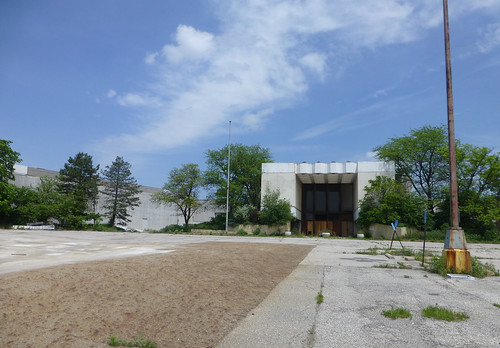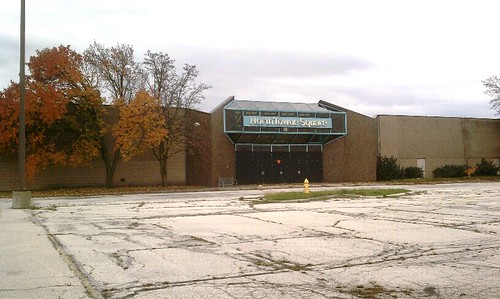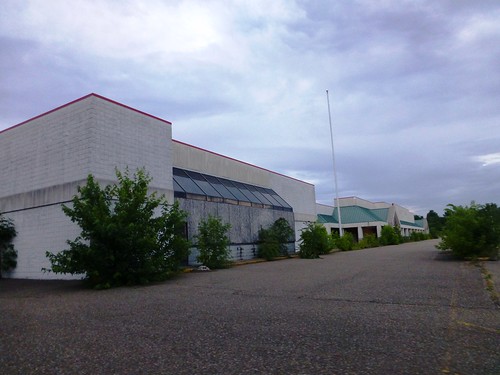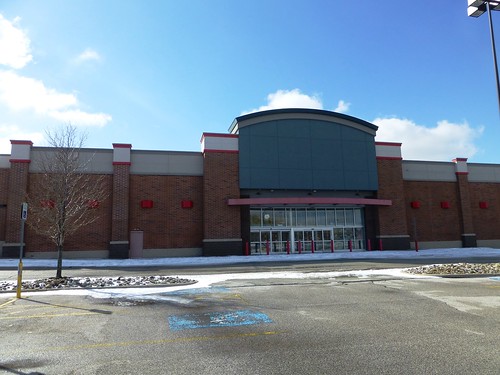Malls and big boxes continue to lose their grip - will this mean more abandoned properties?

Posted July 24, 2013 at 1:27PM
Hanging out on social media is beginning to replace hanging out in shopping malls for many American teenagers, long a major sector of the customer base for enclosed malls and big-box stores. In addition, according to an article written by Adrianne Pasquarelli for Crain’s New York Business, the teen population is contracting, having dropped two percent between 2008 and 2011.
Pasquarelli sums up the trend:
“Malls have been on the wane for years, as shoppers turn to e-commerce, which is easier, and outlets, which are cheaper. But retailers that cater to teens are especially vulnerable since their customers surf social media websites more than they hang out in malls.”
Enclosed mall shopping was down in 2012 compared to 2011 despite the gradual strengthening of the economy. Some well-known retailers are suffering the consequences: Aéropostale, for example, saw its stock price decline nearly 40 percent over the course of a year. “The company is trimming its fleet, closing about 100 stores, or 10 percent of its base, and was forced into heavy markdowns last quarter,” writes Pasquarelli, whose article was published in April.
The implications for land use are significant, as abandoned retail outlets and dead malls become signs of community decay, in many cases exacerbating the problems associated with suburban sprawl as they and their parking lots take up unproductive space and force customers to drive elsewhere for shopping.
Among older properties losing their original functions, there’s a distinction to be made between strip malls, large enclosed malls, and big-box “power centers.” Strip malls typically have smaller storefronts aligned close together and facing the parking lot and street, which in many cases have allowed them to find new adaptations for small businesses, including those run by immigrant populations that have settled in inner suburbs. Vacant large enclosed malls typically have a mixture of large “anchors” and smaller retail venues, but the smaller spaces generally are not visible from the outside, making them less attractive to new businesses that need retail traffic, even if the rents for them are becoming more affordable. Big boxes are more visible, at least from roadways, but the spaces are too large for small tenants.
The good news is that there have been success stories of adaptations of these larger retail venues, and rethinking their functions has produced some very good templates for adaptive reuse and redevelopment. Galina Tachieva, June Williamson, and Ellen Dunham-Jones are among urbanist thought leaders who have produced very good books on the subject.
But the fact remains that, in most markets across the country, demand for adaptive reuse has been slow to build. In a meticulously written and documented article for the University of Colorado Law Review, Sarah Schindler summarized some of the grim, on-the-ground facts:
“Although turnover and short-term vacancy is normal in a retail landscape, the vacancy rate for big boxes is unprecedented. One source estimated the national retail shopping center vacancy rate to be 11 percent after the first quarter of 2010. This rate has increased since 2008, when the national retail vacancy average was 8.4 percent and 2000, when average retail vacancy was at a low of 6 percent.
“Not only are these stores going dark, but they are staying that way. A study in Texas in 2005 found that the thirty empty former Wal-Marts in the state remained unoccupied for approximately three years on average. A few of the stores remained empty for a decade; one stayed dark for seventeen years. Similarly, a former Kmart in Hastings, Nebraska was vacated in 1992 and sat empty for a decade.”
Schindler is an associate professor at the University of Maine School of Law.
She nails the consequences for communities:
“These empty stores impose numerous negative externalities on the communities in which they are located, including blight, reduced property values, loss of tax revenue, environmental problems, and a decrease in social capital.”
Schindler’s article, which is well worth a read for those who want to dig deep into the topic, proposes that municipalities use their zoning authority to alleviate the harms associated with abandoned retail properties, including code changes that “incentivize redevelopment or reuse and disincentivize new greenfield development.”
Neal Peirce, writing on his Citiwire website, suggests that performance bonds, covering all reasonable property recovery costs, be required of all industrial or commercial owners whose properties might constitute a future blight. An alternative, suggested by Rex LaMore and Michelle LeBlanc of Michigan State University and cited in Peirce’s column, would be to require landowners to secure an insurance policy that at least provides for the removal of an abandoned structure. The insurance policy and subsequent premium would cover the cost of dismantling, removal, and restoration of a site. (Peirce’s and LaMore’s articles address abandoned industrial properties and brownfields as well as abandoned commercial sites.)
Peirce, whose article does not mince words, reminds us that parking lots are also a big part of the problem:
“Thousands of abandoned facilities – once-active steel and auto plants, gas stations, supermarkets, convenience store blocks, Walmarts, Kmarts and other retailers’ failed big boxes – litter the landscape from sea to shining sea.
“And it’s not just the buildings – it’s the parking lots. Contaminated with brake fluid, hydraulic fluid, gas and crankcase oil – everything that drips out of cars – acres of parking space generate runoff that must be treated and hauled off in an environmentally responsible way . . .
“The basic big box form – a single-use structure surrounded by a sea of parking space, isolated from town and community centers, rarely connected to public transit – is emblematic of the sprawl and waste that plagues urban development in America.”
So, with more and more evidence that the late-20th century suburban retail model is on the decline, those interested in smarter land use have both good news and bad news. The good news is that we may have less new retail sprawl being built. The bad news is that we may also have more old retail sprawl to deal with.
Related posts:
- As we remake suburbs, should we guard against "commercial gentrification"? (June 11, 2013)
- How to retrofit failing suburban big-box stores into a green showcase (March 12, 2012)
- Can this dead suburban mall be transformed into something better? It's complicated. (June 13, 2011)
- The big-box ghosts of shopping past (December 18, 2009)
- As we lose shopping malls, are we losing something sacred? (December 2, 2009)
- Strip shopping center vacancies at 17-year high (October 12, 2009)
Move your cursor over the images for credit information.



